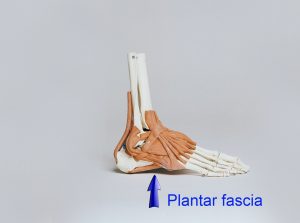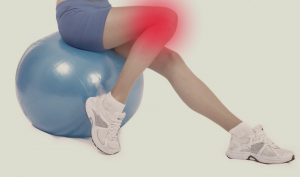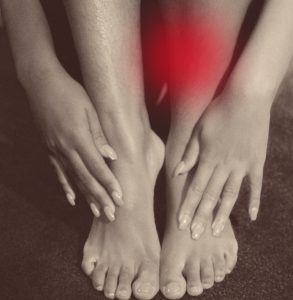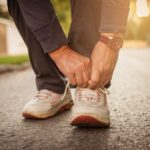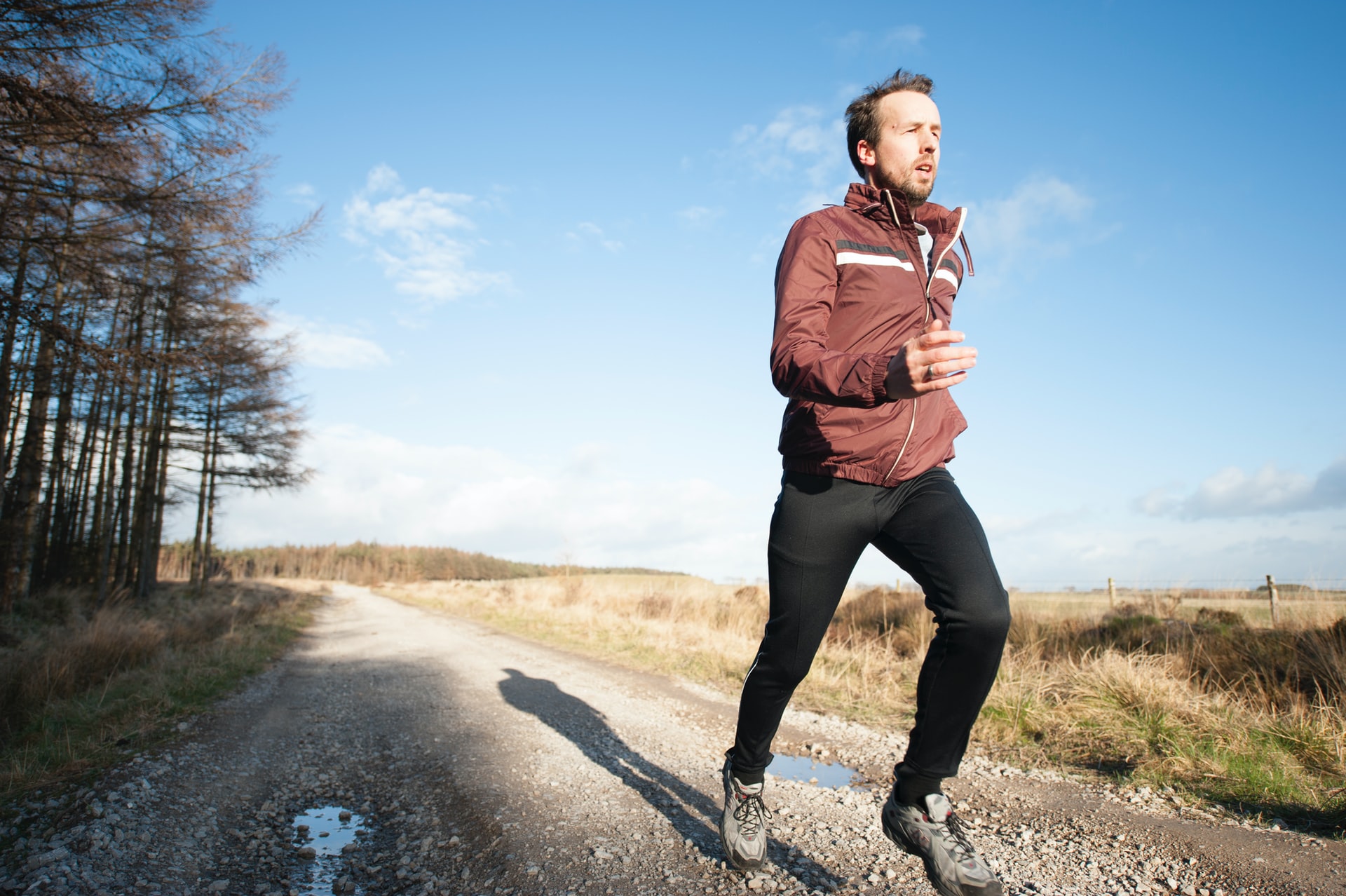
10 Nov Three Common Overuse Injuries (& How to Avoid Them)
When you’re taking advantage of some extra-warm fall weather, you may be more likely to overdo your activity, leading to possible overuse injury. Whether you’ve had a busy summer season or you’ve been less active, overuse injury can strike anyone under the right (or wrong) circumstances. We share some common overuse-injury areas, and tell you how to enjoy the great outdoors without wrecking your winter.
Plantar Fasciitis: The plantar fascia is a thick band of connective tissue that runs from your heel, all along the bottom of your foot. Plantar fasciitis is the inflammation of the plantar fascia. The symptoms include pain in the arch, pain in the heel, and pain that is worse in the morning and after periods of inactivity. Doing too much activity, having high arches, and wearing ill-fitting or worn out shoes can all increase your risk of developing plantar fasciitis.
IT Band Syndrome: Your iliotibial band runs from the outside of your hip to your knee. IT band syndrome happens when the area becomes inflamed due to overuse of the knee bending and straightening. Symptoms include pain at the knee, a snapping feeling over the knee, pain following activity – especially notable when climbing up or down stairs. IT band syndrome is most common in distance runners and cyclists.
Shin Splints: While not an exact diagnosis, “shin splints” is more of a catch all term for pain located around the shin. Typically, shin splints involve pain on the inside of the leg, along the shin bone. Shin splints can result from overuse, worn out or ill-fitting shoes, flat feet, and poor mechanics.
How to Help Prevent These Overuse Injuries:
Pace yourself: Don’t go all ‘weekend warrior’ just because the sun is out and the weather feels great. It’s hard to give yourself limits, especially if you’re feeling good – but if you’re not conditioned, or if you’re over-trained, you can actually end up feeling worse – with an injury. Set a hard limit, either in time (“I’ll play basketball for 30 minutes”) or distance (“I’m only biking ten miles today”) and stick to it!
Wear proper footwear: Just because they’re your favorite pair of shoes doesn’t mean you should wear them for every activity! Depending on your activity, you could end up causing yourself a lot of (literal) pain. Check the tread on your athletic shoes and if it’s smoother than a ballet slipper, it’s time for a new pair! Likewise, if you don’t remember when you bought them, it’s time to shop. Good shoes don’t have to break the bank, but you also can’t expect great performance from bargain-basement shoes. For help, try visiting a specialty store if you’re a runner, hiker, or cyclist. For specific concerns, you can ask your Physical Therapist.
Warm up and cool down: You can’t prevent every injury, but by helping your body ease into exercise, you can reduce some risk. Stretch gently before exercise and start slow. When you’re finished, don’t just collapse in a heap – walk slowly, and then stretch before hitting the shower.
Listen to your body: Your body is definitely talking to you; the question is, are you listening? If you ignore that ache in your shin or pain in your knee without addressing it, you could likely end up with a much bigger problem. If you have pain that persists, pain at rest, pain that disrupts your sleep, or pain that lasts despite basic home treatment, it’s time to see a Physical Therapist.
If you experience a suspected overuse injury, it’s a good time to see a Physical Therapist. Your PT will assess your injury, as well as any contributing factors. They’ll also educate you about your treatment plan and prevention of future problems. At Body One PT, we work with patients of all ages and activity levels and we’re ready to help you get back to feeling better than your best! We’re both locally-owned and operated, with three locations serving Central Indianapolis: North Indy/Carmel, Fishers, and Zionsville. The best team in Indy is only a call or click away so don’t wait, schedule an appointment today. We also offer free injury screens at each location!
Sources: https://www.choosept.com/symptomsconditionsdetail/physical-therapy-guide-to-iliotibial-band-syndrome-itbs
https://www.webmd.com/fitness-exercise/shin-splints#1


